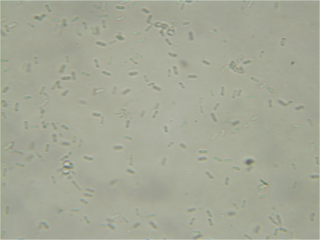Phoma: Difference between revisions
removed Category:Pleosporales; added Category:Ascomycota genera; Fungorum template; misc. |
→References: Aveskamp |
||
| Line 62: | Line 62: | ||
==References== |
==References== |
||
{{Reflist}} |
|||
<references /> |
|||
== Bibliography == |
|||
* Boerema, G. H.; de Gruyter, J.; Noordeloos, M. E.; Hamers, M. E. C. 2004. ''Phoma'' Identification Manual: Differentiation of Specific and Infra-specific Taxa in Culture. CABI. |
* Boerema, G. H.; de Gruyter, J.; Noordeloos, M. E.; Hamers, M. E. C. 2004. ''Phoma'' Identification Manual: Differentiation of Specific and Infra-specific Taxa in Culture. CABI. |
||
*{{cite journal|last1=Aveskamp|first1=M.M.|last2=de Gruyter|first2=J.|last3=Woudenberg|first3=J.H.C.|last4=Verkley|first4=G.J.M.|last5=Crous|first5=P.W.|title=Highlights of the Didymellaceae: A polyphasic approach to characterise Phoma and related pleosporalean genera|journal=Studies in Mycology|date=2010|volume=65|pages=1–60|doi=10.3114/sim.2010.65.01|accessdate=21 November 2014}} |
|||
==External links== |
==External links== |
||
Revision as of 03:45, 21 November 2014
| Phoma | |
|---|---|

| |
| Phoma exigua spores | |
| Scientific classification | |
| Kingdom: | |
| Division: | |
| Class: | |
| Subclass: | |
| Order: | |
| Family: | |
| Genus: | Phoma |
Phoma is a genus of common coelomycetous soil fungi. It contains many plant pathogenic species. About 140 Phoma taxa have been defined and recognized[2] which may be divided into two large groups: (i) plurivorous fungi, generally saprobic or weakly parasitic, mainly from temperate regions in Eurasia, but occasionally also found in other parts of the world (including areas with cool or warm climates); and (ii) specific pathogens of cultivated plants.[3]
Spores are colorless and unicellular. The pycnidia are black and depressed in the tissues of the host. Phoma is arbitrarily limited to those species in which the spores are less than 15 µm as the larger spored forms have been placed in the genus Macrophoma. The most important species include Phoma beta which is the cause of the heart rot and blight of beets, Phoma batata that produces a dry rot of sweet potato, and Phoma solani. [4]
Species
Species include:
- Phoma caricae-papayae
- Phoma clematidina
- Phoma costaricensis
- Phoma cucurbitacearum
- Phoma destructiva
- Phoma draconis
- Phoma eupyrena
- Phoma exigua
- Phoma glomerata
- Phoma glycinicola
- Phoma herbarum
- Phoma insidiosa
- Phoma medicaginis
- Phoma microspora
- Phoma nebulosa
- Phoma oncidii-sphacelati
- Phoma pinodella
- Phoma scabra
- Phoma sclerotioides
- Phoma strasseri
- Phoma tracheiphila
References
- ^ "Integrated Taxonomic Information System" (web). www.itis.gov. Retrieved 2008-01-12.
- ^ Kirk PM, Cannon PF, Minter DW, Stalpers JA. (2008). Dictionary of the Fungi. 10th ed. Wallingford: CABI. p. 524. ISBN 0-85199-826-7.
{{cite book}}: CS1 maint: multiple names: authors list (link) - ^ Van der Aa HA, Noordeloos ME, de Gruyter J. (1990). Species concepts in some larger genera of the Coelomycetes. Studies in Mycology 32: 3–19.
- ^ Harshberger, John William (1917). A Text-book of Mycology and Plant Pathology. Original from the University of Michigan: P. Blakiston's son & co. pp. page 261–262. January 12, 2008.
{{cite book}}:|pages=has extra text (help)
Bibliography
- Boerema, G. H.; de Gruyter, J.; Noordeloos, M. E.; Hamers, M. E. C. 2004. Phoma Identification Manual: Differentiation of Specific and Infra-specific Taxa in Culture. CABI.
- Aveskamp, M.M.; de Gruyter, J.; Woudenberg, J.H.C.; Verkley, G.J.M.; Crous, P.W. (2010). "Highlights of the Didymellaceae: A polyphasic approach to characterise Phoma and related pleosporalean genera". Studies in Mycology. 65: 1–60. doi:10.3114/sim.2010.65.01.
{{cite journal}}:|access-date=requires|url=(help)
External links
